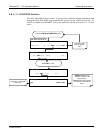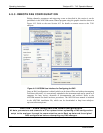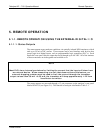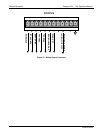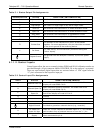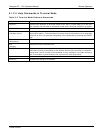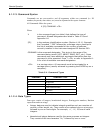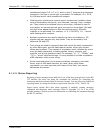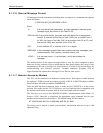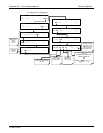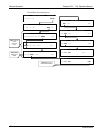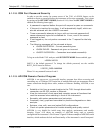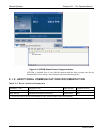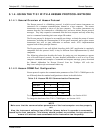
Remote Operation Teledyne API – T101 Operation Manual
148
5.1.2.3. Command Syntax
Commands are not case-sensitive and all arguments within one command (i.e. ID
numbers, keywords, data values, etc.) must be separated with a space character.
All Commands follow the syntax:
X [ID] COMMAND <CR>
Where
X is the command type (one letter) that defines the type of
command. Allowed designators are listed in Table 4-25 and
Appendix A-6.
[ID] is the analyzer identification number (Section 4.10.1.). Example:
the Command “? 200” followed by a carriage return would print
the list of available commands for the revision of software
currently installed in the instrument assigned ID Number 200.
COMMAND is the command designator: This string is the name of the
command being issued (LIST, ABORT, NAME, EXIT, etc.). Some
commands may have additional arguments that define how the
command is to be executed. Press ? <CR> or refer to Appendix A-
6 for a list of available command designators.
<CR> is a carriage return. All commands must be terminated by a
carriage return (usually achieved by pressing the ENTER key on a
computer).
Table 5-4. Command Types
COMMAND COMMAND TYPE
C Calibration
D Diagnostic
L Logon
T Test measurement
V Variable
W Warning
5.1.2.4. Data Types
Data types consist of integers, hexadecimal integers, floating-point numbers, Boolean
expressions and text strings.
Integer data are used to indicate integral quantities such as a number of
records, a filter length, etc. They consist of an optional plus or minus sign,
followed by one or more digits. For example, +1, -12, 123 are all valid
integers.
Hexadecimal integer data are used for the same purposes as integers.
They consist of the two characters “0x,” followed by one or more
07266B DCN6485




